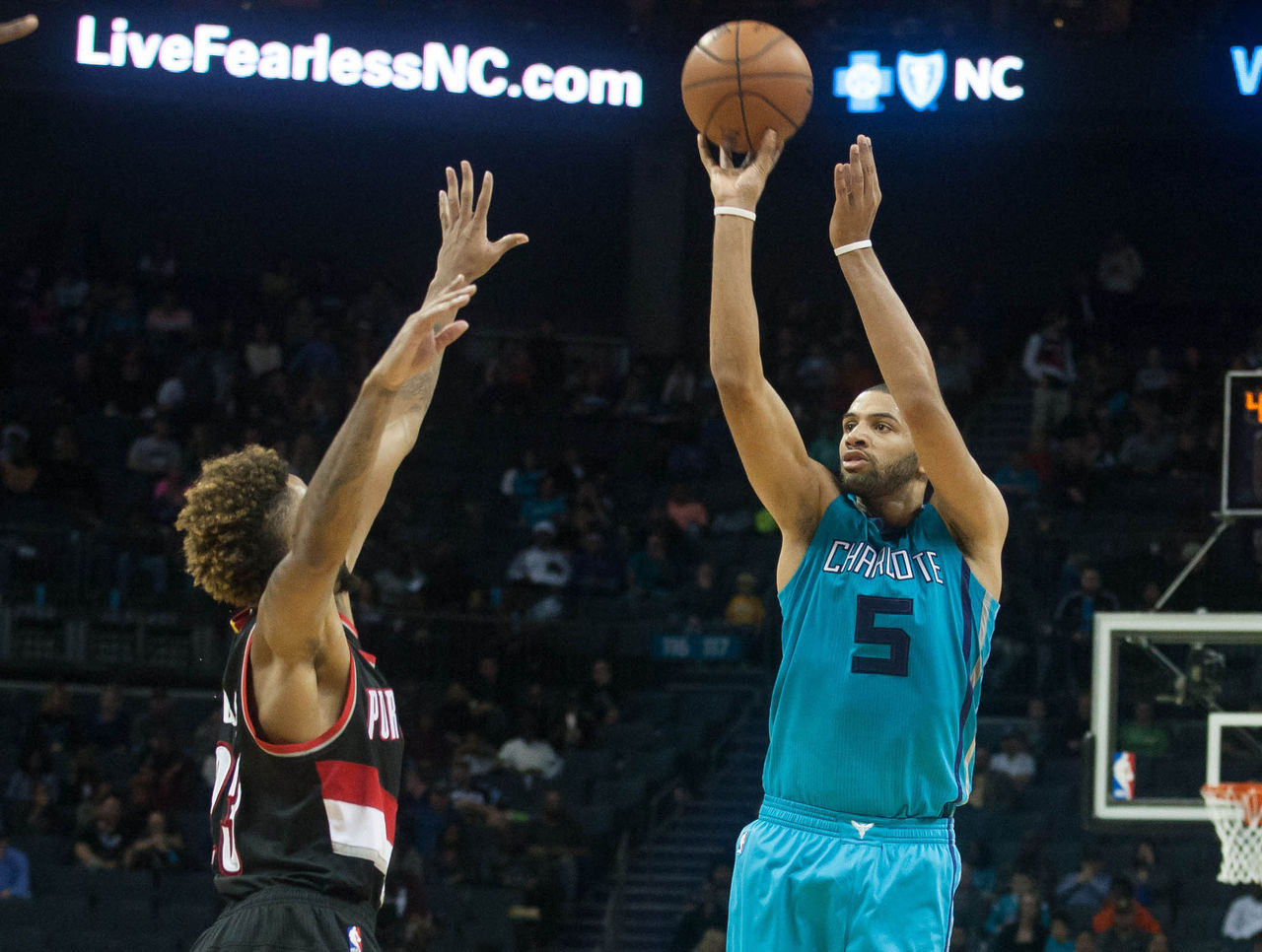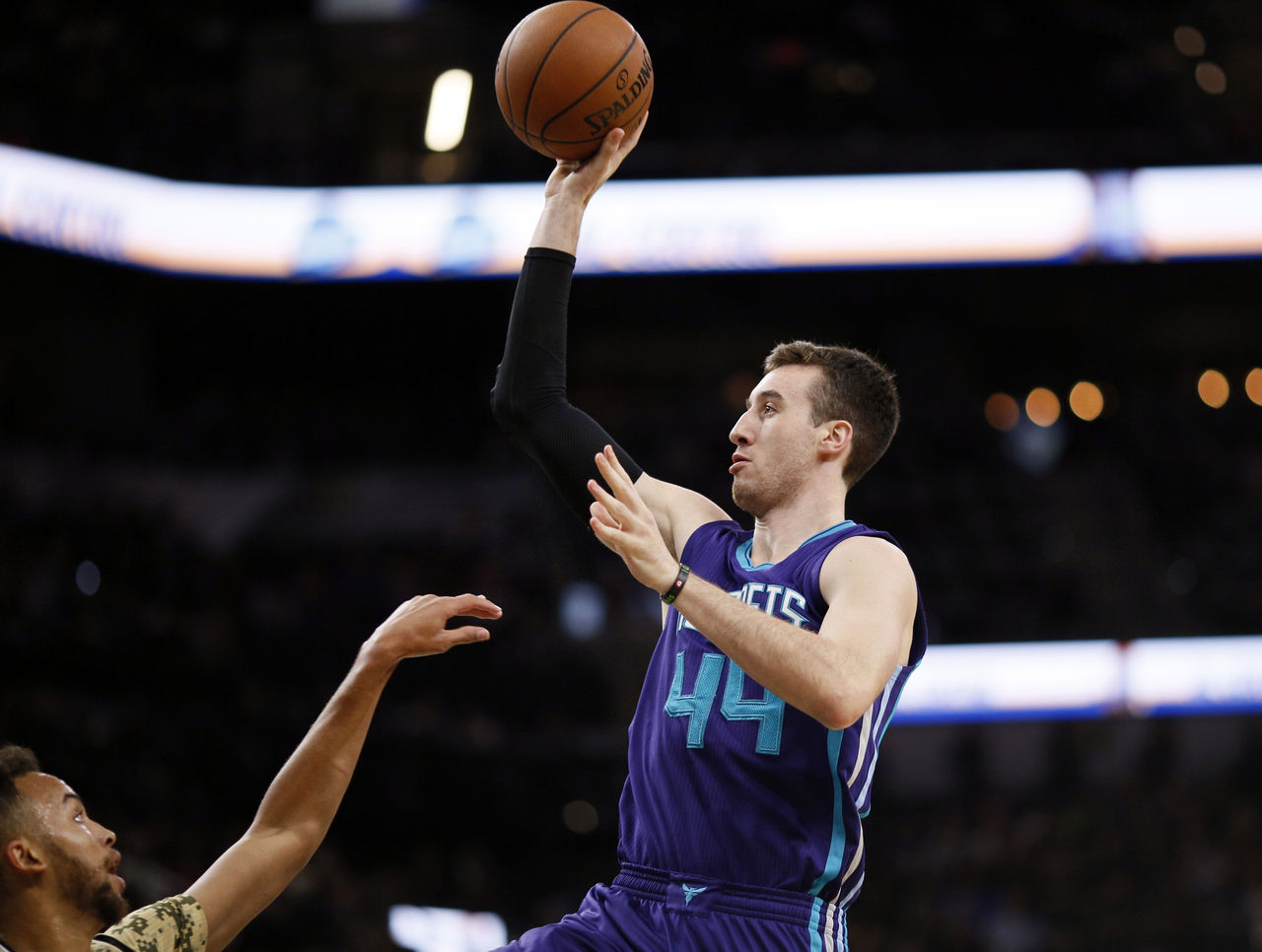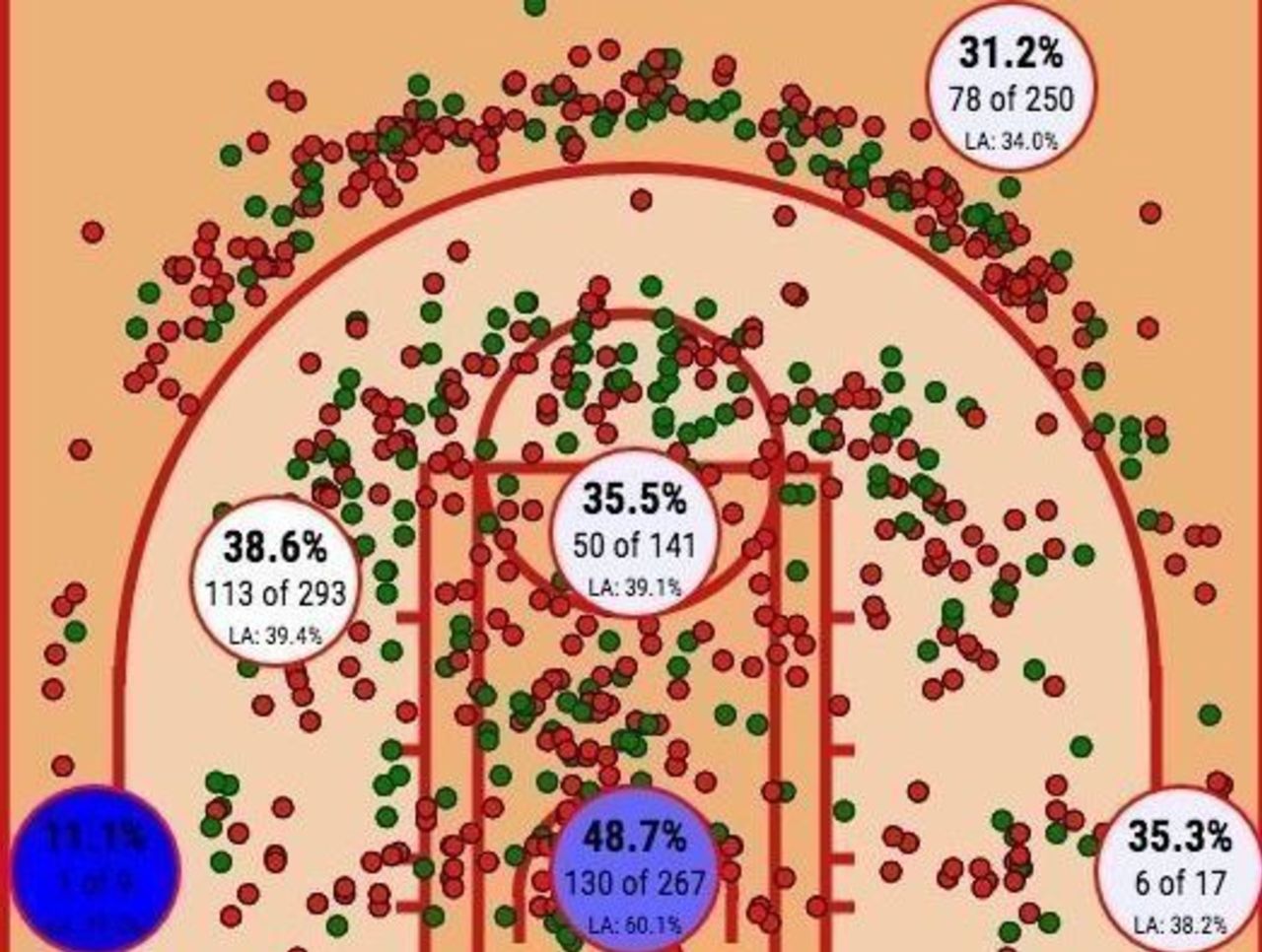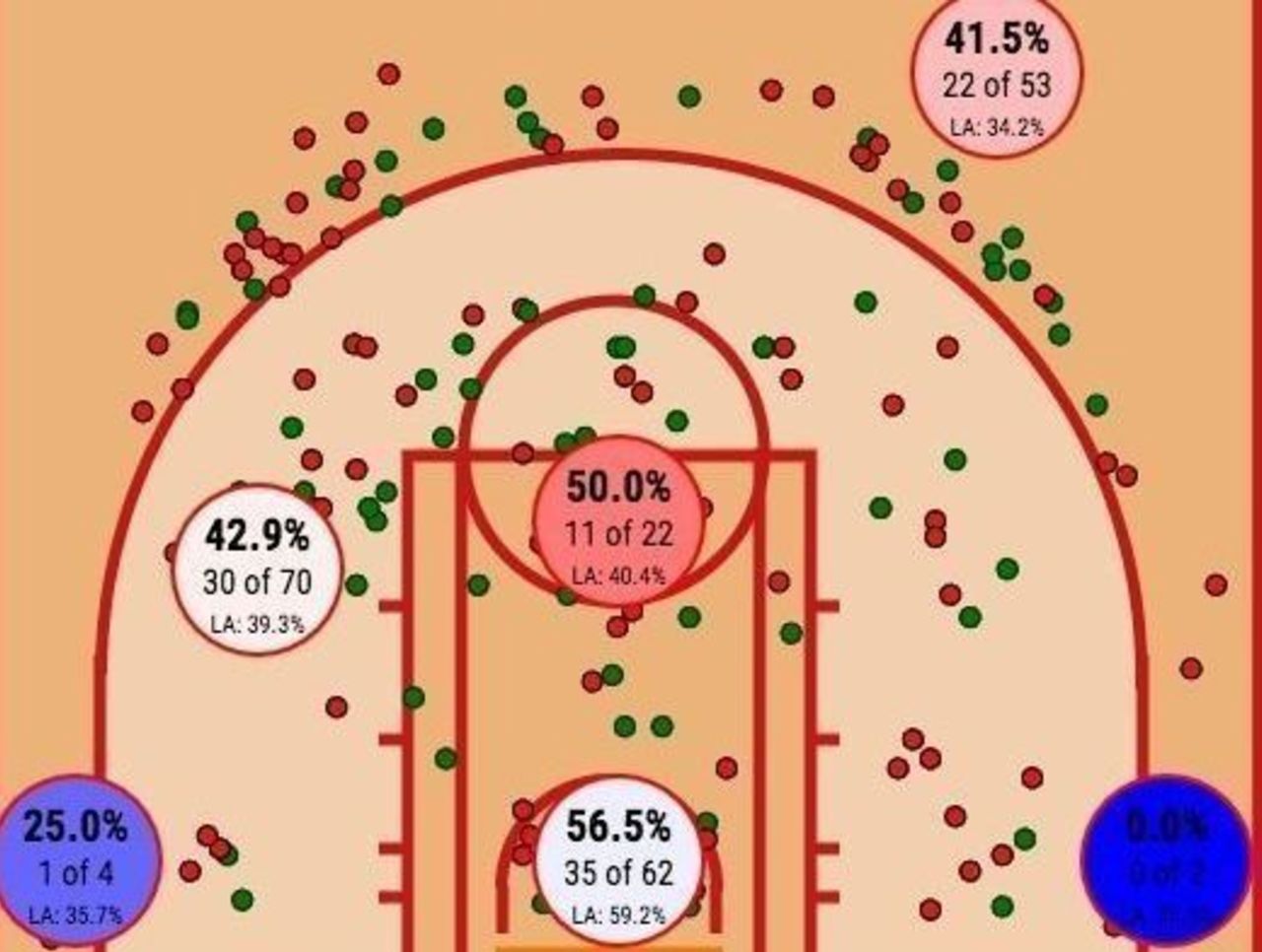Carolina reapers: Meet the Charlotte Hornets, offensive juggernaut

It's no secret that extrapolating from early-season samples is a fool's errand. Bewildering, unsustainable outcomes will naturally pop up when a handful of NBA games are played in a vacuum. But quietly, with the season now a month old, one of the league's most surprising trends is ongoing in Charlotte, and showing no sign of slowing down.
There was plenty of doom and gloom (including hereabouts) when the Hornets lost Michael Kidd-Gilchrist for the season. On top of being one of the league's very best wing defenders, Kidd-Gilchrist is the most athletic, exciting, and naturally gifted player on a team that's long been slow-paced, starless, and uninspiring. But somehow, in the shadow of that unfortunate situation, the Hornets have stumbled upon something extraordinary.
They've gone 9-3 since an 0-3 start, and as of this typing, rank fourth in the NBA in offensive efficiency. That may not seem like a huge deal at first blush, so to put it into context, here are the team's rankings in its 11 seasons since returning to Charlotte as the Bobcats in 2004: 28th, 27th, 27th, 24th, 27th, 24th, 26th, 30th, 28th, 24th, 28th.
Just looking at those numbers conjures images of aimless dribbling and dead-end drives, Byron Mullens hucks and blown Bismack Biyombo bunnies, Ray Felton turnovers and clanked Adam Morrison fadeaways. It's remarkable, really. Even as the personnel has turned over time and again, Charlotte's offense has remained a clogged toilet.
No longer.
Simply put, this year's Hornets are getting shots earlier in the clock, shooting way more threes, hitting them at a much higher rate, passing the ball more effectively, and getting more out of their opportunities near the rim.
| Season | O Rtg. (lg. rank) | Pace | 3pt fga | 3pt% | TS% | FG%<5ft. | Ast rate |
|---|---|---|---|---|---|---|---|
| 2014-15 | 97.6 (28) | 95.3 (22) | 19.1 (24) | 31.8 (30) | 49.8 (29) | 54.3 (29) | 15.9 (19) |
| 2015-16 | 105.2 (4) | 98.9 (17) | 26.5 (6) | 35.9 (11) | 55 (5) | 60 (6) | 16.8 (9) |
They aren't running anything revolutionary. They don't exactly scramble defenses by flinging the ball around the perimeter, don't have an explosive dive man who can suck in defenders on the pick-and-roll, aren't particularly adept at getting to the line, don't crash the offensive glass, and get next to nothing in transition. Their half-court offense, though, produces more points per 100 possessions than any team outside the Bay Area.
Calling in the plumbers
Perhaps the first thing you notice is that the Hornets don't stop moving. They run reversals, set screen after screen - on and off the ball - and continually have guys pinning down, popping up, and darting into space. They do this methodically, patiently, without forcing anything (they're the lowest-turnover team in the league), until good looks present themselves. And for once, they can actually cash in on those looks, because they addressed their single biggest need in the offseason and acquired some shooting - namely in Jeremy Lamb, Nicolas Batum, and Frank Kaminsky. They didn't have a single qualified player shoot better than 35.8 percent from 3-point range last season. Right now they have five.
If there's an argument for sustainability in the Hornets' long-ball uptick, it's that apart from shooting more threes (which is something every NBA team - even the one coached by Byron Scott - is doing), they've dramatically improved the quality of shots they're generating. Even with the influx of deep threats, they're averaging about a half-foot more separation on their 3-point attempts, per NBA Savant.

It's hard to overstate how crucial Batum has been to unclogging things. Trading for him this summer came with plenty of risk, given his impending free agency, the fact it cost last year's first-round pick, Noah Vonleh, and that Batum was coming off his least productive season in six years. Thus far he's proven well worth it, washing out the taste of that injury-marred campaign and completely changing the shape of Charlotte's attack with his playmaking and shooting.
The Hornets have never really had a wing of his ilk - a guy who can pass and handle the ball like a point guard, and also knock down quick-trigger jumpers from outside. Kidd-Gilchrist didn't attempt a single 3-pointer a season ago; Batum is launching 5.5 per game and canning an amazing 42.7 percent of them. (The Hornets have grown particularly fond of feeding him hand-offs, and using the drop guy as a screener behind which Batum can hoist a triple. No player has produced more points via handoffs this season.)
Lamb, too, has been a godsend, not just for his range, but for his ability to consistently attack closeouts, put the ball on the floor, and finish in close. His 71.4 percent mark from the restricted area is tops among all guards with at least 20 attempts.
Frank the Tank, Kemba, et Al.
Adding stretchy bigs in Kaminsky and Spencer Hawes to a frontcourt that already included Marvin Williams (torrid so far) has given the Hornets the option to go five-out, the kind of lineup they could scarcely have imagined putting together a year or two ago.

Kaminsky is particularly intriguing, and considering the enormous weight of expectation (and corresponding bust potential) he's carrying through no doing of his own, it's almost impossible not to root for his success.
The Hornets may well come to regret declining the six-pick package the Celtics offered for the No. 9 pick Kaminsky was selected with - or just not drafting Justise Winslow at that spot - but so far, the 7-foot rookie has been a quietly dimension-altering force in limited minutes. He's hitting 45 percent of his threes, he can pass a little, and he's shown a precocious ability to make reads on the fly. The Hornets have outscored opponents by 11.4 points per 100 possessions when he's on the floor, easily the best net rating on the team.
Charlotte's stunning, 17-point fourth-quarter comeback against the Kings last week happened entirely with center Al Jefferson on the bench. Jefferson's been the Hornets' offensive fulcrum since signing as a free agent in 2013, but you couldn't help but notice how uncluttered the floor looked without him.
Point guard Kemba Walker absolutely took over in that fourth quarter. He's shooting career-best percentages from the field (46.5) and from deep (38.3) this season, and his true shooting percentage leaps nearly seven percent when he plays without Jefferson.
In an offense that can finally breathe, the longest-suffering Hornet is thriving; probing defenses, slicing and kicking, nailing pull-ups above the break, even finishing at the rim, which he's always been decidedly lousy at.
Walker shot chart, 2014-15:

2015-16:

(Charts courtesy NBA Savant)
None of that is to say Jefferson is extraneous. The first name in old-school game remains the team's surest bet of salvaging a possession when nothing materializes. He's still a tremendous post-scorer with a knack for conjuring buckets out of midair, and he represents a great change-of-pace option. The Hornets don't employ anyone the way they do him; they've run 145 plays ending with a shot off a post-up, and Jefferson has accounted for 115 of them.
And there's finally a nice symbiosis at play for him and the Hornets. Jefferson's usage rate may be his lowest since 2009-10, but he's shooting a career-high 70.7 percent in the restricted area. Defenses actually have to pick a poison now, and Charlotte's sudden glut of shooting weapons forces teams to think twice about doubling Jefferson in the post.
Let the good times roll
Look, it's easy to imagine the cudgel of regression bludgeoning the sense back into these overachievers soon or late, if only because the franchise has been depressing and rudderless for so long. (Even Kidd-Gilchrist, for all that makes him great, is a walking reminder of the year the Bobcats went 7-59 - the worst winning percentage in league history - only to lose the top pick in the lottery and watch Anthony Davis fall into the lap of the very franchise that had relocated from Charlotte 10 years earlier.)
That's all the more reason to enjoy this for as long as it lasts. Even if the Hornets do regress, they've still managed to get through nearly 20 percent of the regular season without being a drag to watch, which means 2015-16 is already a smashing success.